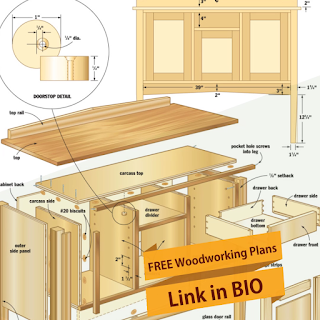Conquer Your DIY Dreams: Step-by-Step Table Furniture Plans for Beginners
Building your own furniture can feel daunting, but crafting a simple table is a fantastic starting point for any woodworking novice. This guide provides detailed, beginner-friendly plans, empowering you to create a functional and stylish piece for your home. We'll walk you through each step, ensuring you gain confidence and satisfaction with your finished project.
Choosing Your Table Type and Materials
Before diving into the construction, decide on your table's style and size. A simple coffee table or end table is an excellent first project. Consider the space you have available and the overall aesthetic of your room. For beginners, a square or rectangular top is easier to manage than a more complex shape.
Selecting the Right Wood
Pine is a popular choice for beginners due to its affordability, workability, and readily available sizes. Birch offers a slightly harder, more refined finish. Avoid hardwoods like oak or maple initially, as they require more advanced tools and techniques. When selecting your wood, check for knots, cracks, and warping—choose boards as straight and free of imperfections as possible. Purchase your lumber slightly oversized to account for cutting and sanding.
Essential Tools and Supplies
Gather these essential tools before you start:
- Measuring Tape
- Pencil
- Circular Saw or Hand Saw
- Safety Glasses
- Wood Glue
- Clamps
- Sandpaper (various grits)
- Screwdriver (or Drill with screwdriver bits)
- Wood Screws
- Wood Stain or Paint (optional)
- Polyurethane or other sealant (optional)
Remember, safety is paramount. Always wear safety glasses when using power tools.
Building the Tabletop
Cut your chosen wood to the desired dimensions for the table top. For a simple design, use two long boards and two short boards to create a rectangular top. Remember to account for the thickness of the boards when measuring. Use a clamp to hold the boards securely together while applying wood glue along the edges. After applying glue, use screws to fasten the boards together. Ensure screws are countersunk to allow for a smooth surface after sanding.
Sanding for a Smooth Finish
Once the glue has dried, meticulously sand the tabletop. Begin with coarser sandpaper (around 80 grit) to remove any imperfections, gradually moving to finer grits (120, then 220) for a progressively smoother finish. Sand in the direction of the wood grain to avoid scratches. A random orbital sander can significantly speed up this process, but careful hand-sanding achieves excellent results as well.
Constructing the Table Legs and Frame
For stability, create a simple frame using four legs and connecting rails. Cut the legs and rails to your desired height and width. Use wood glue and screws to attach the legs to the rails, forming a sturdy rectangular frame. This frame will provide support for the tabletop.
Attaching the Tabletop to the Frame
Once the frame is securely assembled, carefully position the tabletop onto the frame, ensuring it's centered and aligned. Use wood glue and screws to fasten the tabletop to the frame, ensuring even pressure across all connection points. Countersink the screws for a smooth, flush surface.
Finishing Touches
Sand any remaining imperfections on the assembled table. Apply your chosen wood stain or paint, following the manufacturer's instructions. Allow ample drying time before applying a sealant, such as polyurethane, to protect your table from scratches, water damage, and general wear. This final step enhances the table's longevity and beauty.
Your Finished Masterpiece!
Congratulations! You've successfully built your own table. Enjoy your sense of accomplishment and the beautiful piece you created. Remember, practice makes perfect, and each project will build your confidence and skills. Now, go forth and furnish your home with your handmade creations!


No comments:
Post a Comment